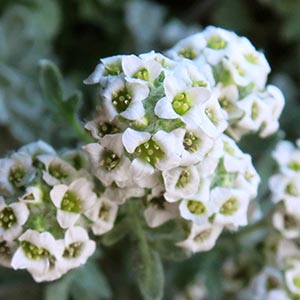Smelowskia
Smelowskia ovalis
candytuft, false candytuft, smelowskia
alpine false candytuft, short-fruit smelowskia
erect to decumbent, unbranched or branched distally, densely pubescent.
several from base, unbranched or branched distally, 0.3–1.8 dm, trichomes simple, 0.3–0.6 mm, mixed with smaller, dendritic ones.
basal and cauline;
petiolate or sessile;
basal rosulate, petiolate, blade margins usually 1- or 2-pinnatisect, rarely entire.
petiole 1–6 cm, ciliate, trichomes simple;
blade obovate, ovate, suborbicular, or oblong in outline, (terminal segments obovate or oblong), 0.5–2.5 cm × 5–15 mm, (terminal segments 0.2–1 cm × 1.5–5 mm), margins pinnatisect or pinnatifid, apex obtuse or rounded.
shortly petiolate or sessile;
blade similar to basal, smaller distally.
(corymbose, several-flowered), often considerably elongated in fruit.
elongated and dense in fruit.
sepals (sometimes persistent), oblong [ovate];
petals spatulate to obovate or suborbicular, (longer than sepals), claw differentiated from blade, (apex rounded);
stamens slightly tetradynamous;
filaments often dilated basally;
anthers ovate or oblong, (apex obtuse);
nectar glands usually confluent, subtending bases of stamens, median glands present or not.
sepals (persistent), 2–2.5 mm;
petals usually white, rarely pinkish, spatulate to obovate, 3.5–4.5 × 1.5–2.5 mm, narrowed to claw, 0.5–1.5 mm, apex rounded;
anthers oblong, 0.5–0.6 mm.
ascending, spreading, suberect, or divaricate [recurved], slender.
suberect to ascending, (subappressed to rachis, often forming less than 40˚ angle), proximalmost sometimes bracteate, 3–10 mm, pubescent, trichomes simple (to 1 mm), mixed with smaller, dendritic ones.
siliques or silicles, usually sessile, rarely shortly stipitate, linear, oblong, obovoid, ellipsoid, spatulate, oblanceolate, suboblong, or pyriform [fusiform, ovoid, suborbicular], smooth, 4-angled, angustiseptate, terete, or subterete [latiseptate];
valves each with prominent or obscure midvein, usually glabrous;
replum rounded;
septum complete or perforated;
ovules 4–18 per ovary;
stigma capitate.
suberect to ascending, ovoid to suboblong, terete or slightly flattened, 2–6 × 2–3 mm, base and apex obtuse;
valves each with obscure midvein;
ovules 4–8 per ovary;
style 0.2–1 mm.
plump, not winged, usually oblong, rarely oblong-lanceolate;
seed coat (minutely reticulate), not mucilaginous when wetted;
cotyledons incumbent or accumbent.
1–1.5 × 0.6–0.7 mm.
Smelowskia
Smelowskia ovalis
Species 25 (7 in the flora).
(Discussion copyrighted by Flora of North America; reprinted with permission.)
Smelowskia ovalis appears to be rare in Oregon, common at Mt. Lassen (Shasta County, California), and widespread at high elevations in Washington.
(Discussion copyrighted by Flora of North America; reprinted with permission.)
1. Basal leaves: blade margins entire, apically 3 or 5-toothed or -lobed, or palmately lobed | → 2 |
1. Basal leaves: blade margins 1- or 2-pinnatisect or pinnatifid | → 4 |
2. Basal leaves: blade margins deeply palmately (3 or) 5 (or 7)-lobed; fruiting pedicels secund; sepals usually persistent; fruits angustiseptate, (8-)12-28 × 4-8 mm; ovules 10-18 per ovary. | S. borealis |
2. Basal leaves: blade margins entire or apically 3 or 5-toothed or -lobed; fruiting pedicels not secund; sepals caducous; fruits subterete or slightly 4-angled, 5-10 × 1.5-3 mm; ovules 4-8 per ovary | → 3 |
3. Basal leaf blade surfaces densely silvery villous, trichomes mostly simple, 1-1.8 mm; petals lavender to purplish; fruiting pedicels 11-27 mm; fruit valves each with obscure midvein; ovules 4 per ovary; seeds 2.2-2.7 mm. | S. johnsonii |
3. Basal leaf blade surfaces densely grayish tomentose, trichomes mostly dendritic with fewer simple ones, to 1 mm; petals white or creamy white; fruiting pedicels 4-12 mm; fruit valves each with prominent midvein; ovules 4-8 per ovary; seeds 1.5-2 mm. | S. porsildii |
4. Sepals persistent; fruits 2-6 mm, bases obtuse, valves each with obscure midvein. | S. ovalis |
4. Sepals caducous; fruits 5-13 mm, bases cuneate, valves each with prominent midvein | → 5 |
5. Fruits pyriform, subterete, apices rounded; ovules 4 per ovary; seeds 2.5-3.2 × 1-1.5 mm. | S. pyriformis |
5. Fruits fusiform, ellipsoid, oblong, or linear, 4-angled, apices cuneate; ovules 8-12 (-14) per ovary; seeds 1.1-2.2 × 0.6-1.1 mm | → 6 |
6. Fruiting pedicels suberect to ascending, subappressed to rachises, forming less than 40˚ angle; seeds 1.1-1.9 × 0.6-0.9 mm; Alberta, British Columbia, Mountain and Pacific states. | S. americana |
6. Fruiting pedicels usually spreading to divaricate, rarely divaricate-ascending, not appressed to rachises, often forming greater than 40˚ angle; seeds 1.7-2.2 × 0.9-1.1 mm; Alaska, Northwest Territories, Yukon. | S. media |
- Local floras:
BC,
CA,
OR,
WA
- Local Web sites:
CalFlora,
CalPhotos,
Flora NW,
PNW Herbaria,
Turner Photog.
WildflowerSearch
iNaturalist (observations)
USDA Plants Database
- LBJ Wildflower Center
- SEINet
- Plants of the World Online
- Encyclopedia of Life
- Wikipedia
- Google Image Search
